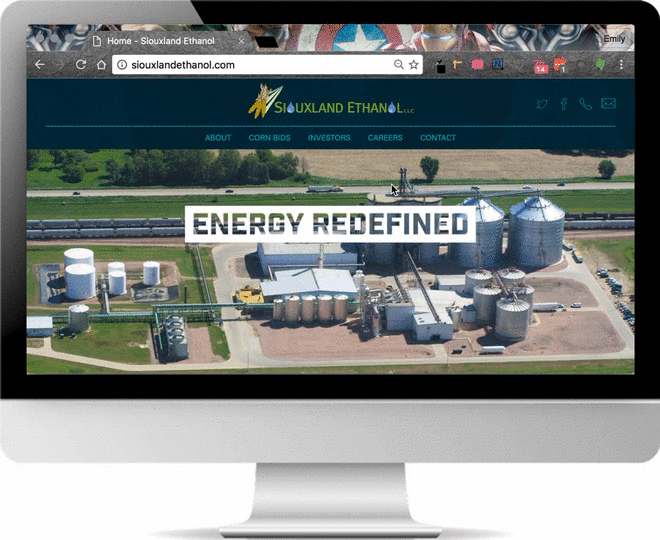“Downtime” isn’t really an accurate description of the winter months for an ag retailer. Certainly, you’re not moving at the frantic pace of planting and harvest. But winter is the season to repair and prepare in expectation of the heavy demands ahead.
Winter is also a great time to prepare for next year’s marketing communication program. More specifically, to map out a plan to capture the essential communications resource regularly overlooked in many organizations—quality images. Quality images in ag are often missed because when the best photo opportunities arise, nobody was prepared to be capturing them.
Let me explain using a common ag example. Late fall and early winter are the selling seasons for seed. Logically, you’ll want to include an article on the topic in your newsletter, post it on your website and social media, perhaps create a flyer or postcard to promote an informational meeting. What would be the perfect shot? A planter rolling through a field, or a farmer filling his planter. Unfortunately, no one took that shot in the spring when the action was live. That’s where planning comes into play.

There are two approaches to gathering images that work well. The first—create an editorial calendar for the year. As you determine what topics you want to cover, you can also determine which images best illustrate those stories and when to capture them. Then create a seasonal shot list.
The second approach is less structured. Look at your business, identify the business segments that will be promoted, then determine the types of images that best illustrate each segment. Like the first approach, put together a seasonal shot list with the goal of creating a photo library that you can access whenever you need just the right image.
[caption id="attachment_1804" align="aligncenter" width="800"] Photo by VistaComm senior journalist Burke Perry.[/caption]
Photo by VistaComm senior journalist Burke Perry.[/caption]
By the way—winter is a great time to update staff portraits, capture indoor events and document regular winter activities like equipment maintenance. You’ll also have some days when conditions are right to grab some good winter scenic shots out in the country.
But how? And who?
Now to the mechanics. How do you capture all these images? There are several options. The first, best option is to find someone on your staff who actually enjoys taking photos—with a camera, not a cell phone (more on this shortly). Generally, there is someone who has the bug. Make them the official photographer, because they’re probably going to capture better photos. And they’re right there at work when photo opportunities occur.
[caption id="attachment_1808" align="aligncenter" width="800"] Photo by VistaComm senior journalist Burke Perry.[/caption]
Photo by VistaComm senior journalist Burke Perry.[/caption]
Second, hire a professional. At VistaComm, we handle the photography when we’re onsite. The resulting photos can be added to your library. The drawback: Any professional is only on site occasionally. By scheduling them strategically, you can add a lot of good shots to your library. But you’ll never catch every event, every crop stage and every time you happen to drive by the perfect shot on your way home.
Third, everyone’s a photographer these days. If you have a smartphone, you have a camera, and that means more people are taking more pictures than ever before—many more pictures. Earlier, I mentioned that a camera is the best way for quality photos. That is absolutely true for print. But cell phone pictures are fine for most web use and, clearly, social media. Your force in the field is often at the heart of the action, so encourage them to capture action shots in season.
[caption id="attachment_1809" align="aligncenter" width="800"] Photo by VistaComm journalist Connie Smith.[/caption]
Photo by VistaComm journalist Connie Smith.[/caption]
Good images breathe life into your communication. They help the writer tell the story or, in some cases, they tell a story all on their own. For more basic tips on taking better pictures, take a look at the blog article "10 Tips for Improving Your Photos to Make Your Marketing Rock!" by Dary Maulsby.
Need help capturing professional-quality, captivating images? Put a VistaComm journalist to work on your publications. Contact us today.
Article Source Here: I Wish We Had a Photo of That: Plan Ahead to Ensure You Have the Images You Need
I Wish We Had a Photo of That: Plan Ahead to Ensure You Have the Images You Need posted first on http://vistacomm.blogspot.com/

 Can prospects find your website?
Can prospects find your website?

 Do site visitors accept your call to action?
Do site visitors accept your call to action? Pay attention to Search Engine Optimization (SEO).
Pay attention to Search Engine Optimization (SEO). Heat Mapping: Finding out where your visitors are looking...and where they’re not
Heat Mapping: Finding out where your visitors are looking...and where they’re not

 In today’s world, video is a key part of content marketing in agriculture. Video is everywhere. It’s accessible. It’s engaging. And, it’s surprisingly easy to create.
In today’s world, video is a key part of content marketing in agriculture. Video is everywhere. It’s accessible. It’s engaging. And, it’s surprisingly easy to create.




 Susan Meier, principal of Meier and Associates, and senior governance consultant with BoardSource, suggests easy ways to make your annual meeting more effective.[/caption] We checked with an expert: Susan Meier, principal of Meier and Associates and senior governance consultant with
Susan Meier, principal of Meier and Associates, and senior governance consultant with BoardSource, suggests easy ways to make your annual meeting more effective.[/caption] We checked with an expert: Susan Meier, principal of Meier and Associates and senior governance consultant with 









